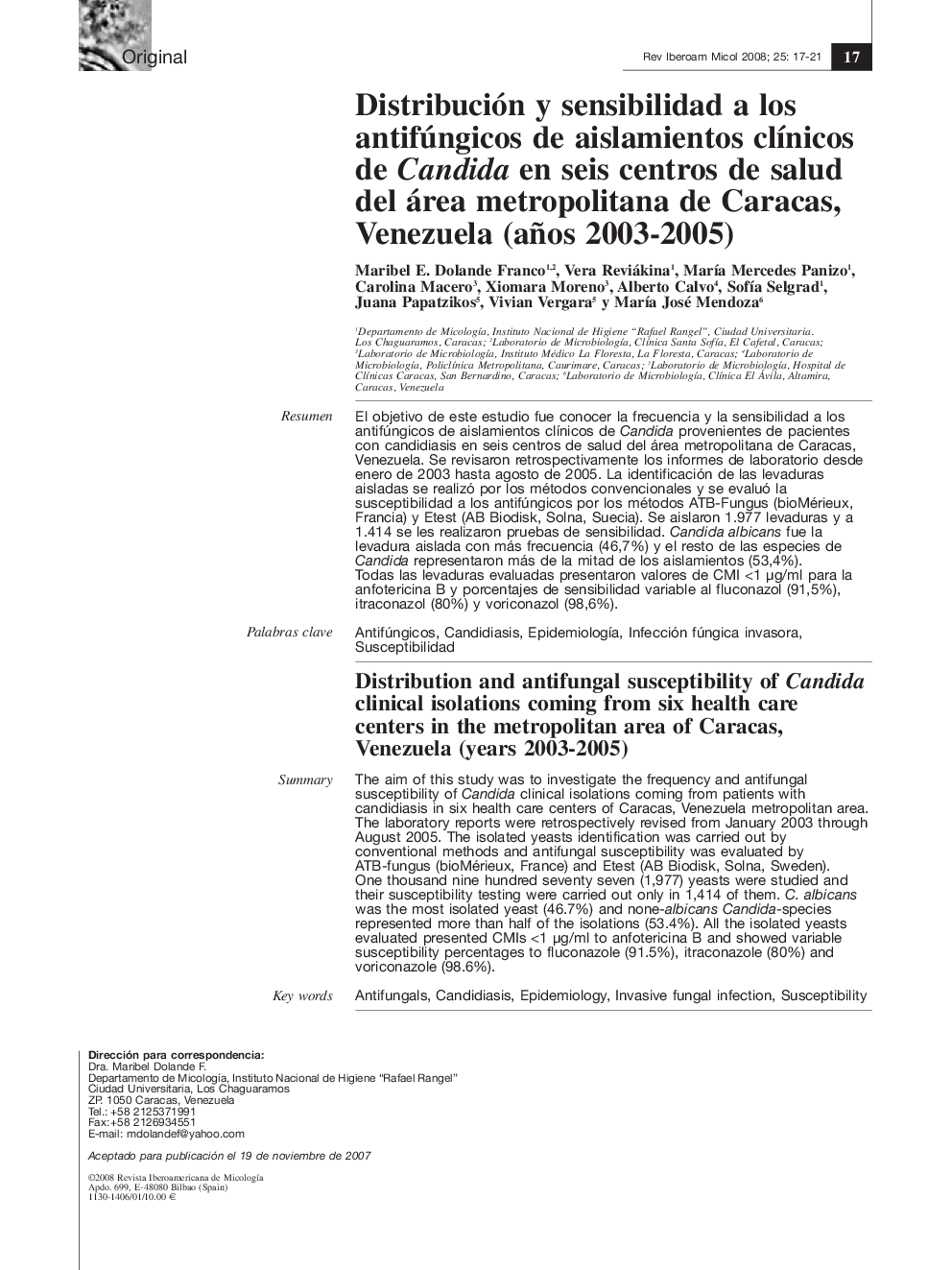| Article ID | Journal | Published Year | Pages | File Type |
|---|---|---|---|---|
| 3419104 | Revista Iberoamericana de Micología | 2008 | 5 Pages |
ResumenEl objetivo de este estudio fue conocer la frecuencia y la sensibilidad a los antifúngicos de aislamientos clínicos de Candida provenientes de pacientes con candidiasis en seis centros de salud del área metropolitana de Caracas, Venezuela. Se revisaron retrospectivamente los informes de laboratorio desde enero de 2003 hasta agosto de 2005. La identificación de las levaduras aisladas se realizó por los métodos convencionales y se evaluó la susceptibilidad a los antifúngicos por los métodos ATB-Fungus (bioMérieux, Francia) y Etest (AB Biodisk, Solna, Suecia). Se aislaron 1.977 levaduras y a 1.414 se les realizaron pruebas de sensibilidad. Candida albicans fue la levadura aislada con más frecuencia (46,7%) y el resto de las especies de Candida representaron más de la mitad de los aislamientos (53,4%). Todas las levaduras evaluadas presentaron valores de CMI <1 μg/ml para la anfotericina B y porcentajes de sensibilidad variable al fluconazol (91,5%), itraconazol (80%) y voriconazol (98,6%).
SummaryThe aim of this study was to investigate the frequency and antifungal susceptibility of Candida clinical isolations coming from patients with candidiasis in six health care centers of Caracas, Venezuela metropolitan area. The laboratory reports were retrospectively revised from January 2003 through August 2005. The isolated yeasts identification was carried out by conventional methods and antifungal susceptibility was evaluated by ATB-fungus (bioMérieux, France) and Etest (AB Biodisk, Solna, Sweden). One thousand nine hundred seventy seven (1,977) yeasts were studied and their susceptibility testing were carried out only in 1,414 of them. C. albicans was the most isolated yeast (46.7%) and none-albicans Candida-species represented more than half of the isolations (53.4%). All the isolated yeasts evaluated presented CMIs <1 μg/ml to anfotericina B and showed variable susceptibility percentages to fluconazole (91.5%), itraconazole (80%) and voriconazole (98.6%).
